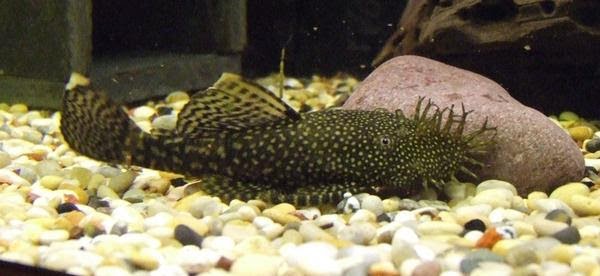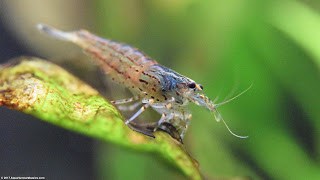Oh No! Algae?!
written by Paul Pinto
Getting an outbreak of algae is definitely one of, if not the most annoying problem you can encounter when running a planted aquarium. Algae comes in many different shapes and forms from free floating green algae that will make your tank look like Ecto-Cooler, to hair algae that will form a carpet over your decor and plants. I’ll go over some of my favorite aquarium way to help control some of the most common nuisance algae.
First, a disclaimer: No aquarium inhabitant should be your first choice when combating an algae outbreak. While some algae growth in any aquarium is normal excessive algae growth is indicative that there is a deeper underlying problem with the aquarium usually either too much light or too many nutrients in the water for the algae to feed on.
Generally speaking, a planted aquarium should receive anywhere between 6-12 hours of light a day; running more than that can cause excess algae. If you are running your light for this amount of time and are still getting excess algae, your light may be too intense for your tank. This can be fixed by dimming your light if possible or reducing the amount the lights are on. Plants need about 4 hours of light to photosynthesize properly so you can reduce the light levels to this amount for a period of a few weeks to combat algae. Alternatively, you can completely blackout the tank for 48-72 hours; the plants will survive in darkness for a few days but many algae will not.
Excess nutrients can come from two main sources in a planted aquarium: fertilizers and dissolved organics. Many people run into algae problems when they overdo it with adding fertilizers into the tank; this causes a build-up of components that if not utilized by the plants WILL be used by an algae in the water. Over feeding your plants will lead the same consequences as over feeding your fish. Try cutting back or cutting out feeding your plants for a few weeks while also doing large water changes to control the algae. Dissolved organics come from fish and plant waste. While a small amount of organics will help feed your plants, a build-up of waste if either your filter or substrate will cause excessive algae growth. To fix this simply make sure your filters and substrate are clean and free of waste.
On top of this, increasing the amount of carbon in the water can help make growth more favorable for the plants. Generally speaking plants need higher amounts of carbon in the water to photosynthesize than algae does. This can be achieved through pressurized CO2 systems or dosing a liquid carbon (Flourish Excel). Flourish Excel can be dosed as much as a 4x dose to help kill off algae. This must be done carefully over the course of a few weeks; dosing daily, and increase the dosage by 50% every few days (1x, 1.5x, 2x, etc.).
Even if you have everything in check you may still get some algae, every planted aquarium will benefit from having some inhabitants that will help algae growth on your plants and decor in check. A few of my favorites are:
Otocinclus
These little guys stay at 1.5-2″ an are excellent algae eaters. They are sensitive to poor water quality and swings in water parameters so they should only be added to well matured tanks and acclimated slowly. They are schooling fish so a group of at least 6 is best.
Bushynose Plecos
Bushynose Plecos are great because they will not eat plants and do not get as large as most other plecos, staying a 4-5″. They are amazing algae eaters and will eat algae throughout their lives. Heed caution when putting these guys in smaller tanks or tanks with delicate plants, as they tend to bulldoze through the environment uprooting smaller plants.
Nerite Snails
Nerites are the best snail for eating algae eating non-stop, they are great for smaller tanks where an algae eating fish might not be feasible. They are also not able to reproduce in freshwater so you do not need to worry about them over running your tank.
Japonica Shrimp
Japonica or Amano Shrimp are great for eating algae off of the leaves of your plants and decor. They will also eat small amounts of hair algae. Being larger than most other freshwater shrimp you usually do not need to worry about other small fish trying to eat them.
Siamese Algae Eaters
Siamese Algae Eaters are great for hair and bush algae, they will often eat long stringy algae other fish will not touch. They do get a bit larger 5-6″ and prefer to be in a group of at least three or more (if not they can get nippy) so they are best for larger tanks.





